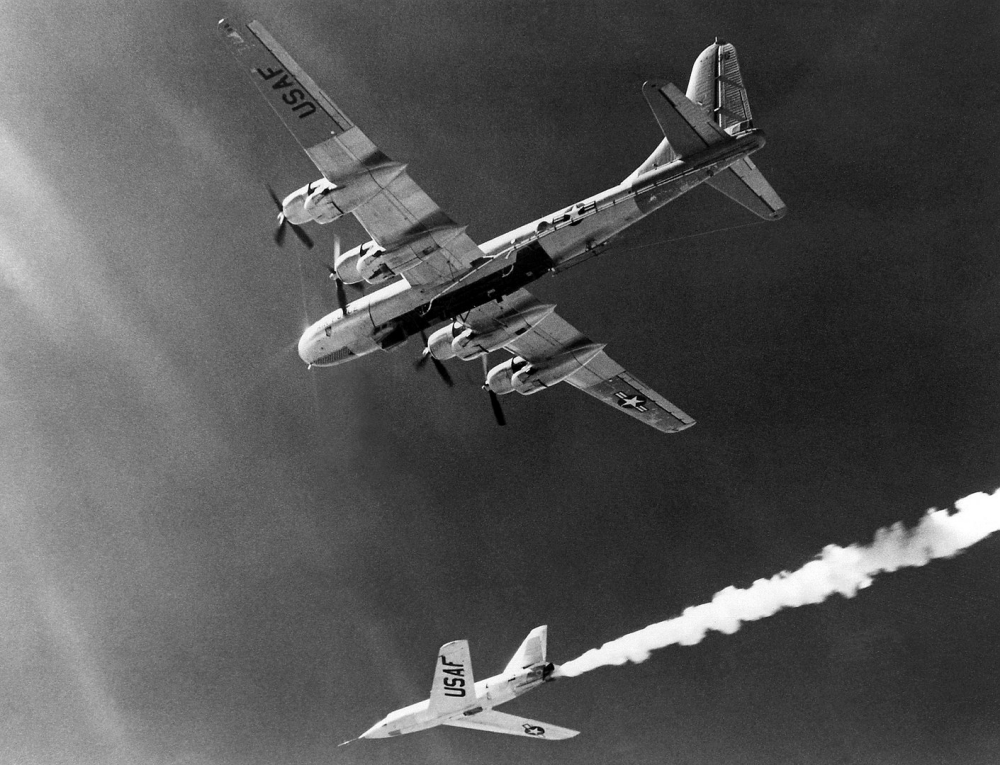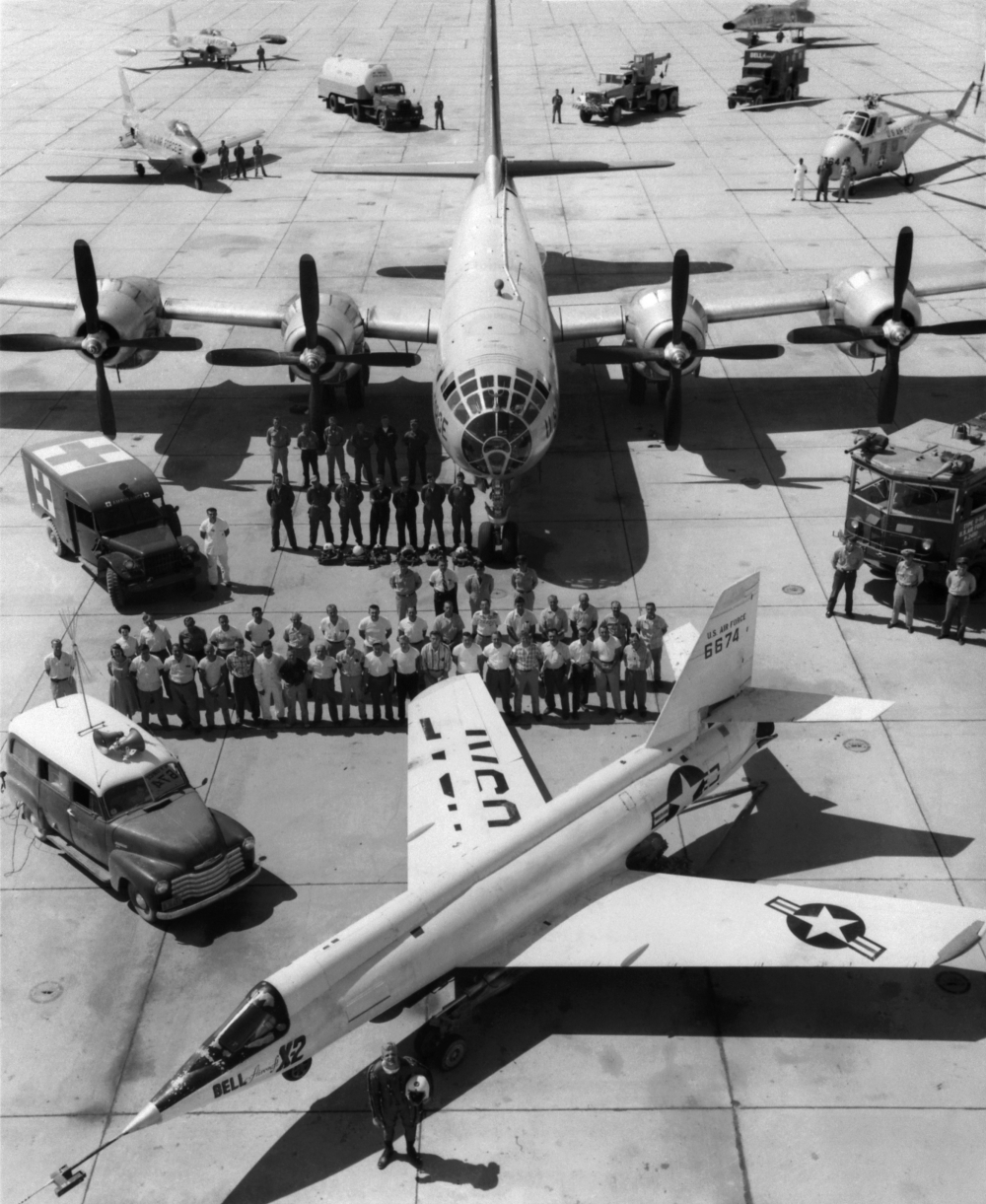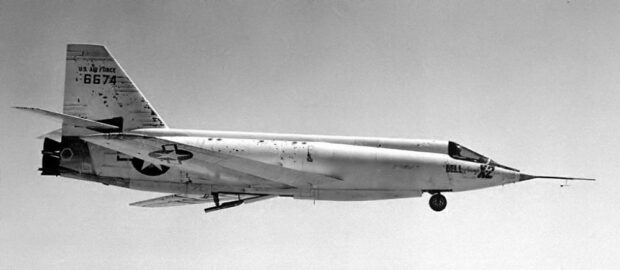The Bell X-2 (nicknamed “Starbuster”) was an X-plane research aircraft built to investigate flight characteristics in the Mach 2–3 range. The X-2 was a rocket-powered, swept-wing research aircraft developed jointly in 1945 by Bell Aircraft Corporation, the United States Air Force and the National Advisory Committee for Aeronautics (NACA) to explore aerodynamic problems of supersonic flight and to expand the speed and altitude regimes obtained with the earlier X-1 series of research aircraft.
Design and development
The Bell X-2 was developed to provide a vehicle for researching flight characteristics at speeds and altitudes in excess of the capabilities of the Bell X-1 and D-558 II, while investigating aerodynamic heating problems in what was then called the “thermal thicket”.
The Bell X-2 had a prolonged development period due to the advances needed in aerodynamic design, control systems, materials that retained adequate mechanical properties at high temperature, and other technologies that had to be developed. Not only did the X-2 push the envelope of manned flight to speeds, altitudes and temperatures beyond any other aircraft at the time, it pioneered throttleable rocket motors in U.S. aircraft (previously demonstrated on the Me 163B during World War II) and digital flight simulation. The XLR25 rocket engine, built by Curtiss-Wright, was based on the smoothly variable-thrust JATO engine built by Robert Goddard in 1942 for the Navy.

The Bell Aircraft Company X-2 (46-674) drops away from its Boeing B-50 mothership in this photo. Lt. Col. Frank “Pete” Everest piloted 674 on its first unpowered flight on August 5 1954. He made the first rocket-powered flight on November 18, 1955. Everest made the first supersonic X-2 flight in 674 on April 25, 1956, achieving a speed of Mach 1.40. In July, he reached Mach 2.87, just short of the Mach 3 goal
Providing adequate stability and control for aircraft flying at high supersonic speeds was only one of the major difficulties facing flight researchers as they approached Mach 3. For, at speeds in that region, they knew they would also begin to encounter a “thermal barrier”, severe heating effects caused by aerodynamic friction. Constructed of stainless steel and a copper-nickel alloy, K-Monel, and powered by a liquid propellant (alcohol and oxygen) two-chamber XLR25 2,500 to 15,000 lbf (11 to 67 kN) sea level thrust, continuously throttleable rocket engine, the swept-wing Bell X-2 was designed to probe the supersonic region.

Air Force test pilot Capt. Iven Kincheloe stands in front of the Bell X-2 (46-674) on the ramp at Edwards Air Force Base, California. Behind the X-2 are ground support personnel, the B-50 launch aircraft and crew, chase planes, and support vehicles
Top Photo: Uploaded by David Königsmark to Pinterest
Sources: YouTube; Wikipedia

